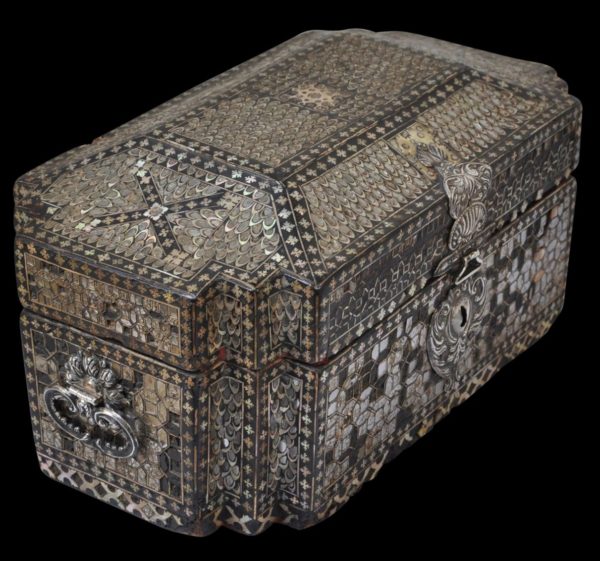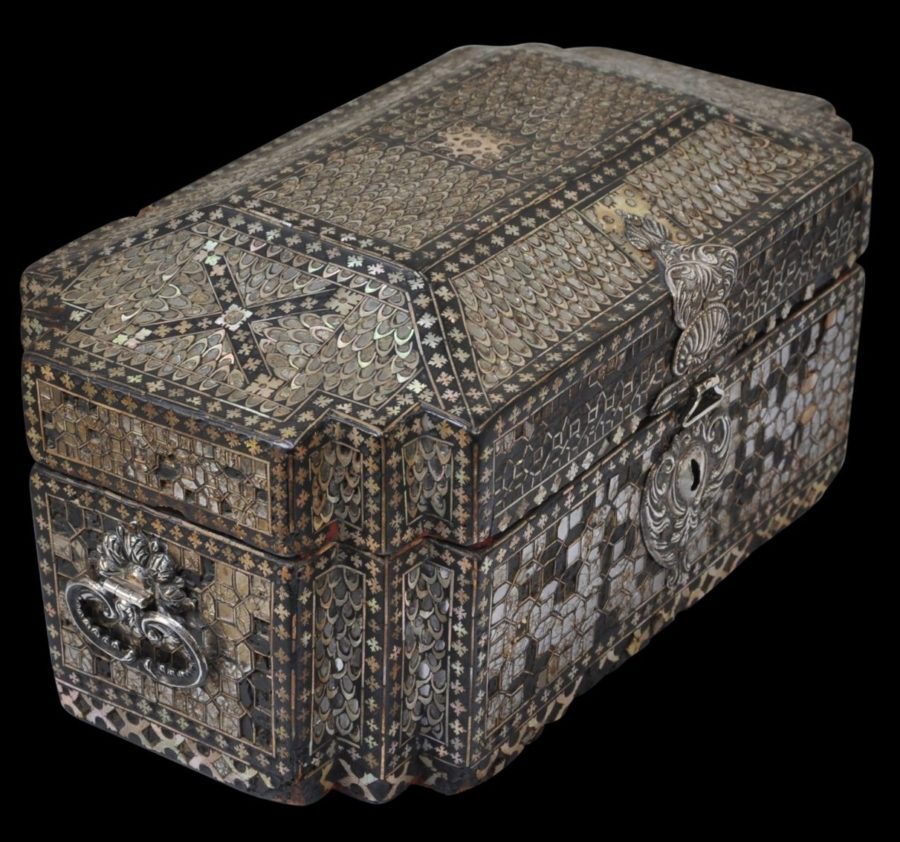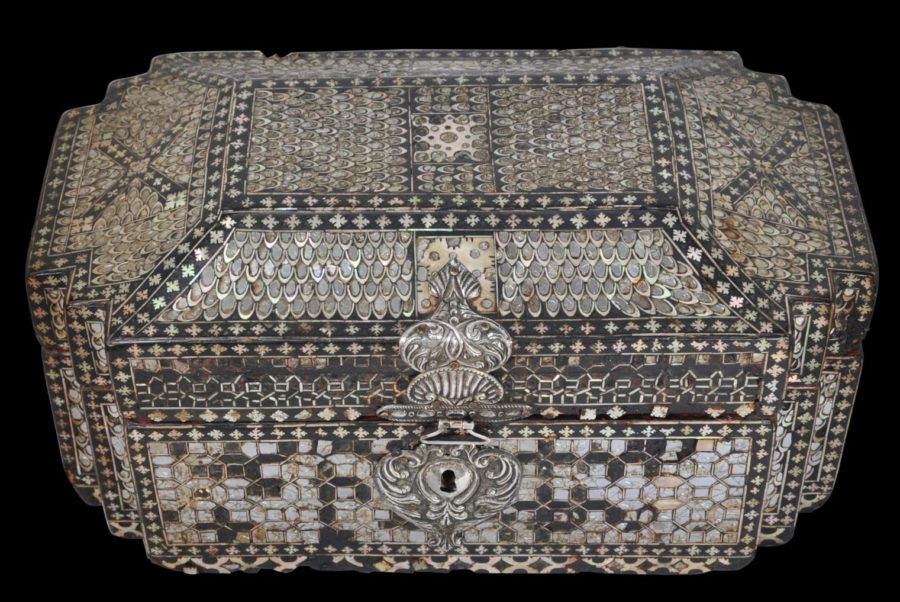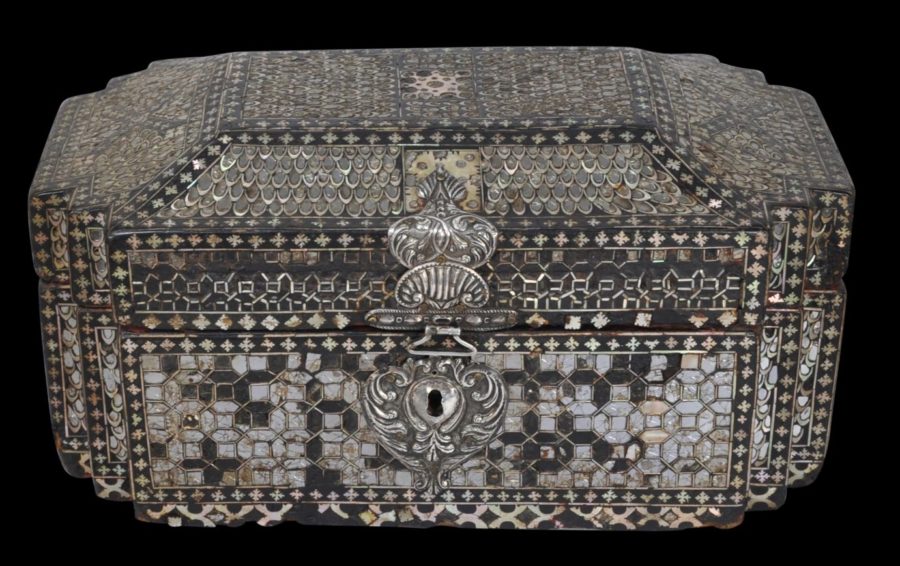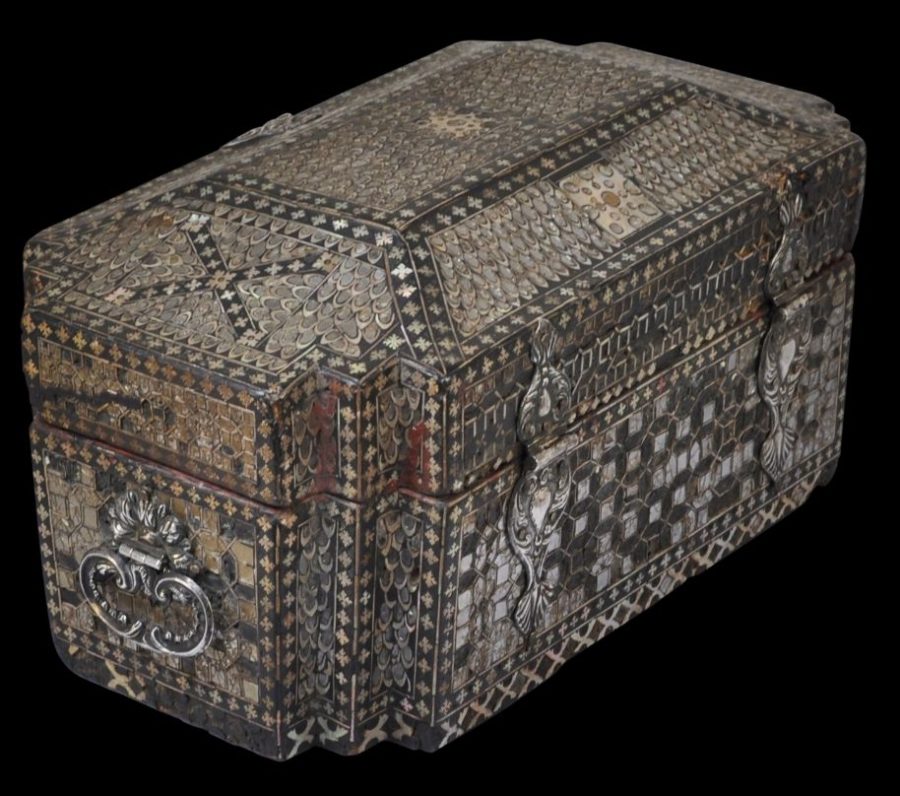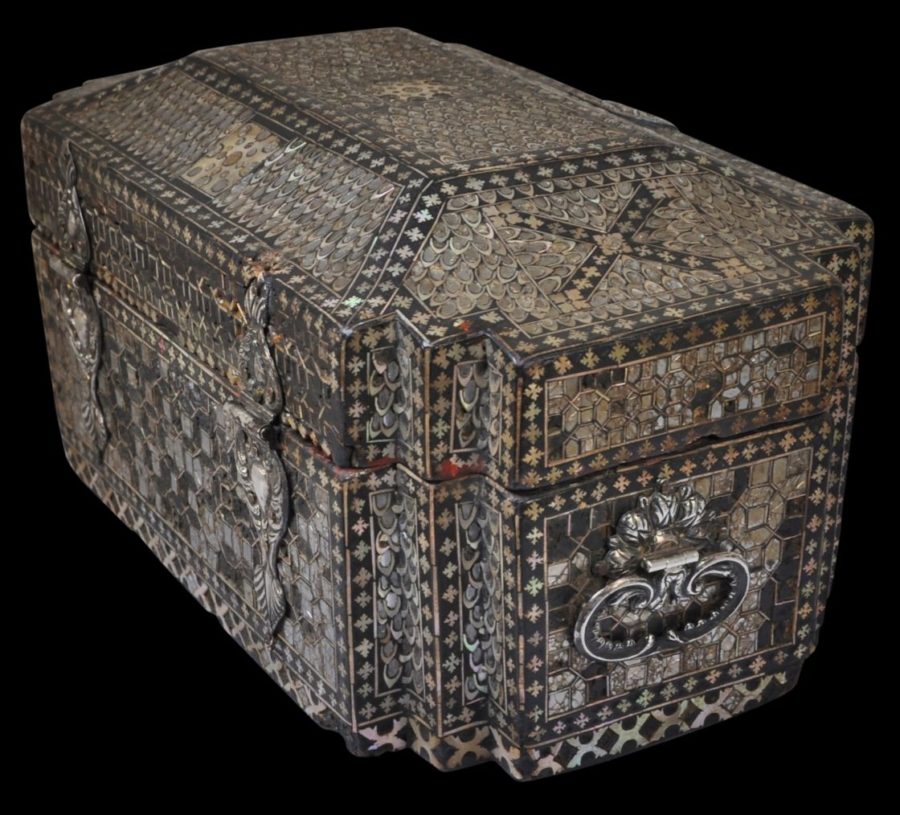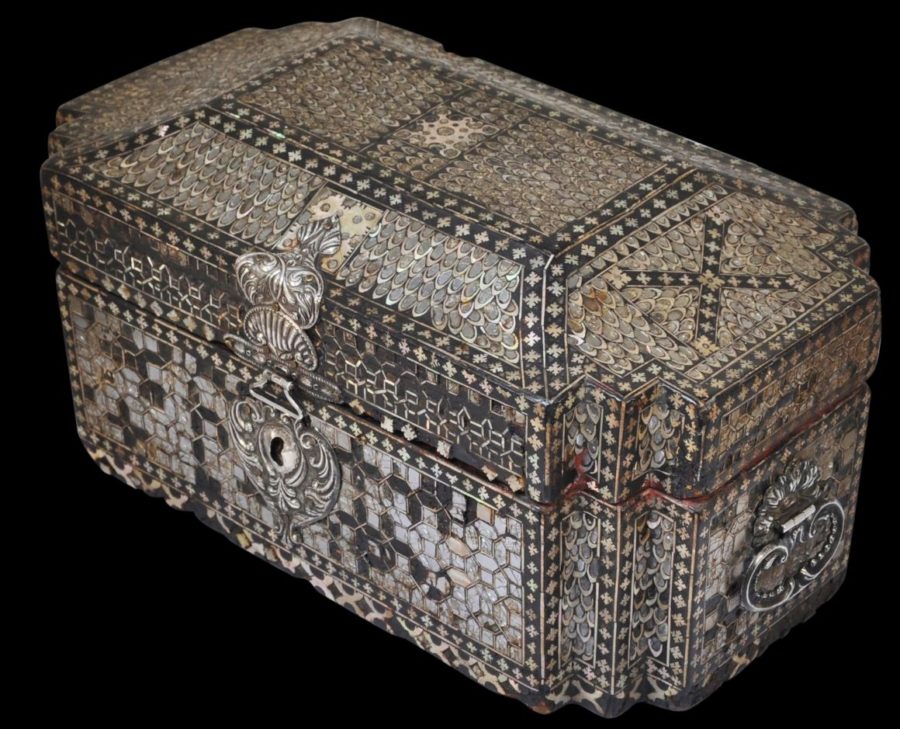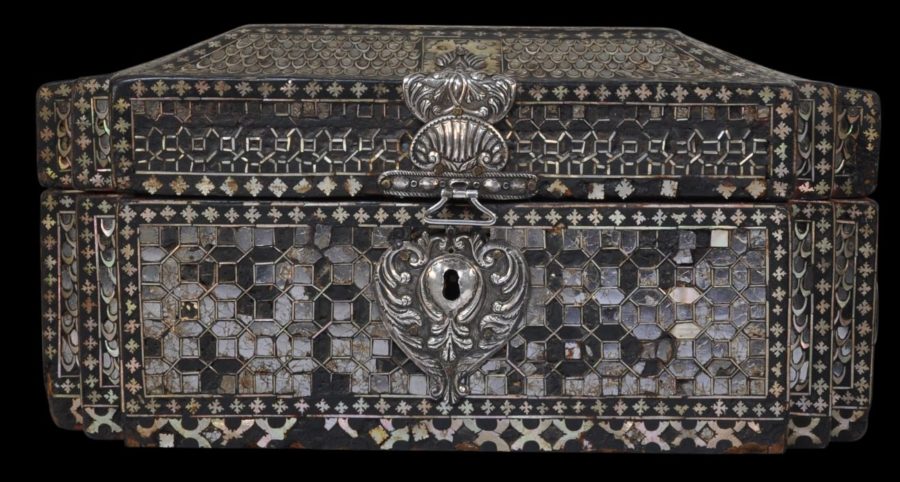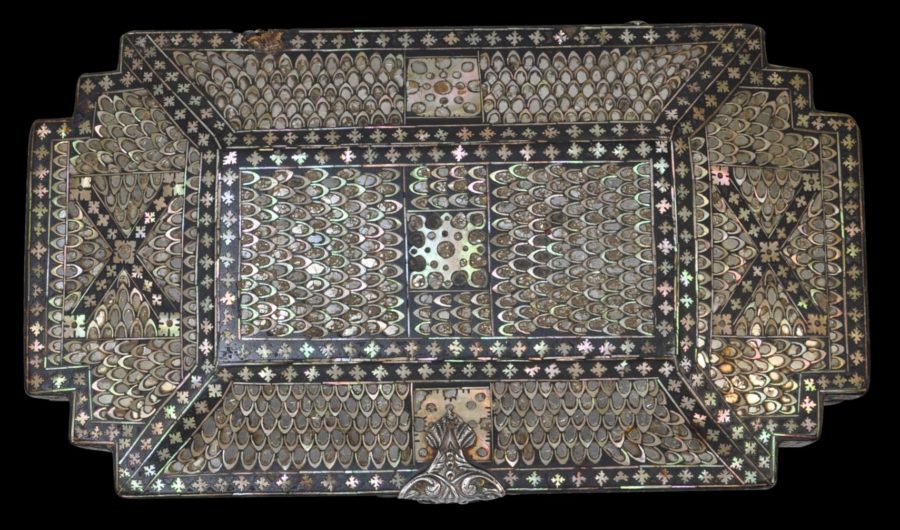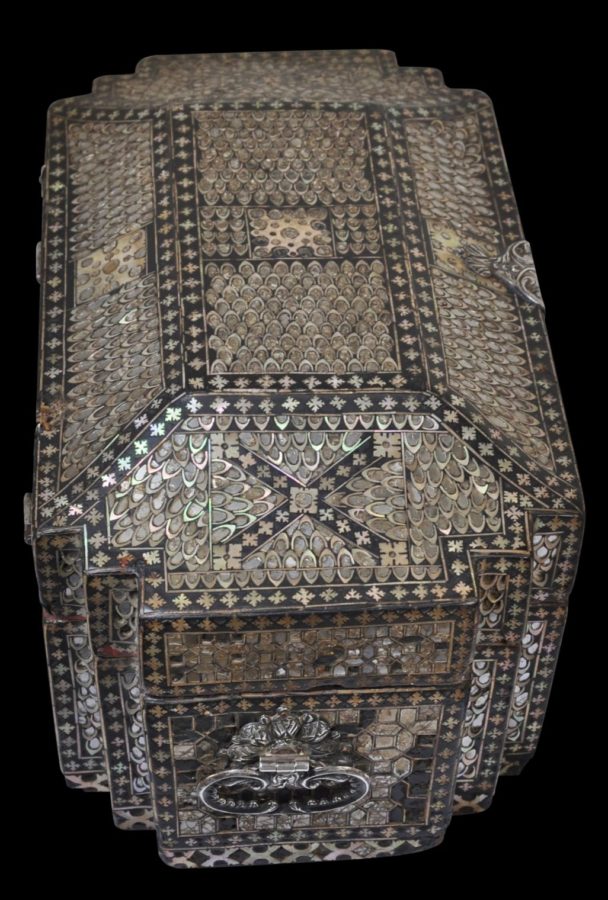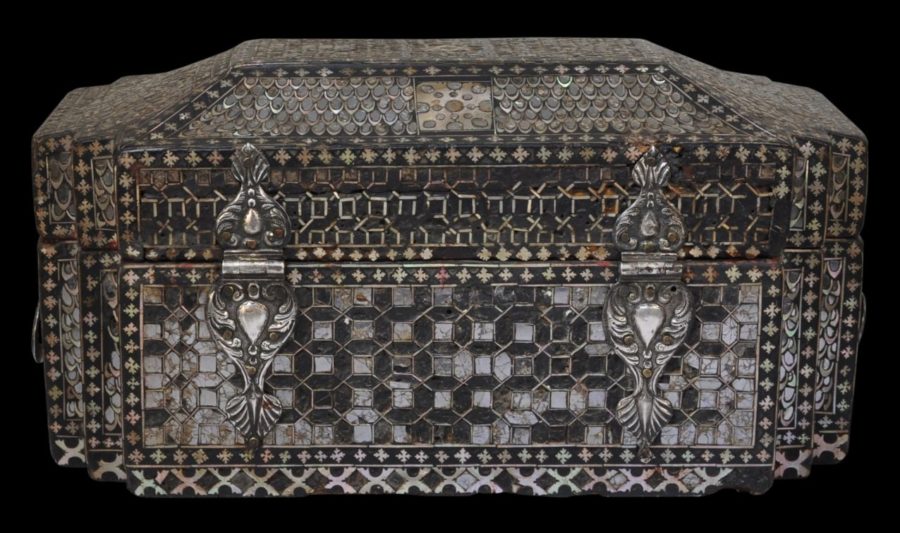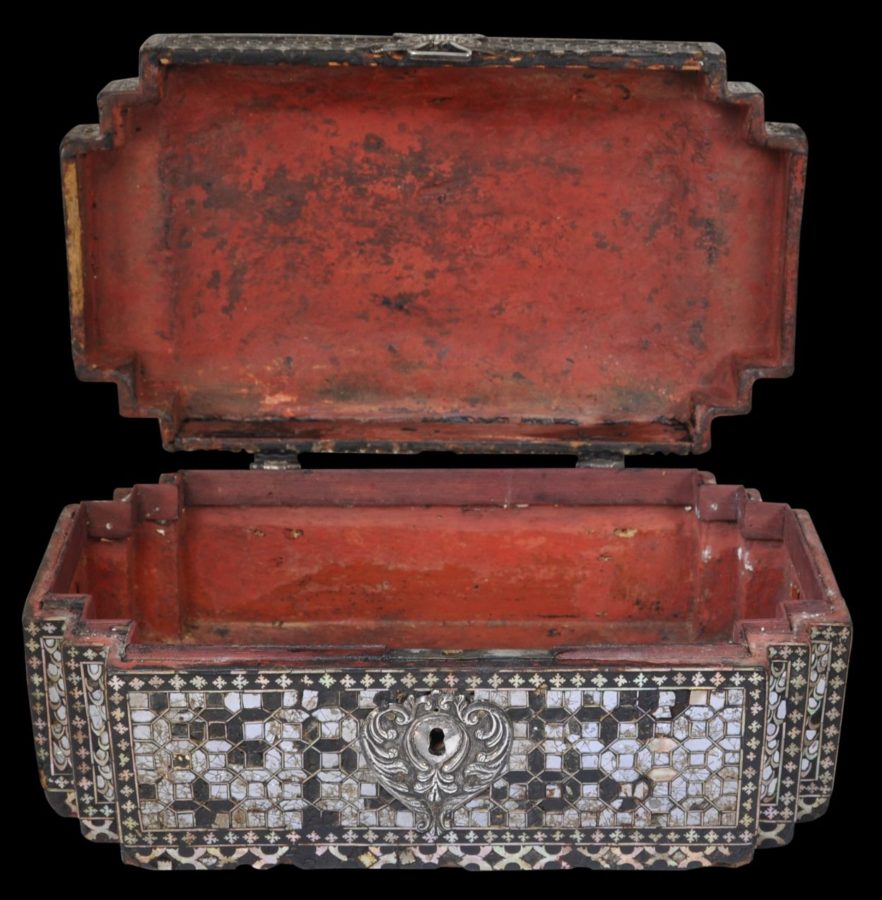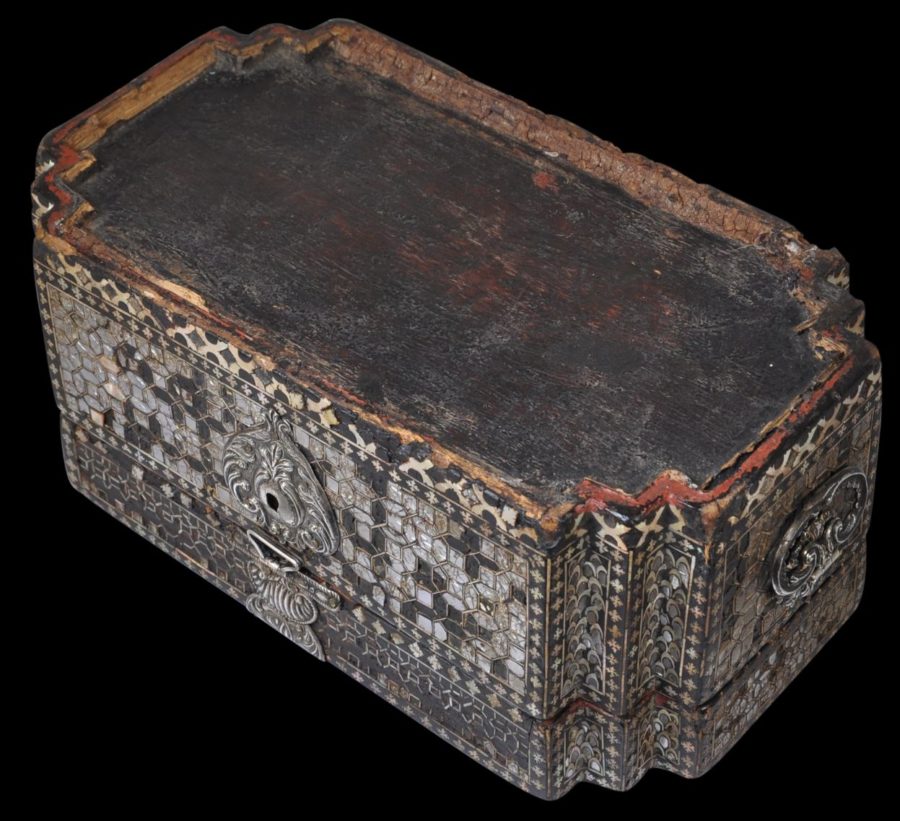This splendid, rare, rectangular box is of Thai manufacture but is in European chest form, and was almost certainly made in the old Thai capital Ayutthaya for the Portuguese market in the 17th or 18th century.
It is of lacquered wood, with fine mother-of-pearl and mirrored glass inlay. The lid is hinged and the mounts are of silver. The mounts are unmarked but of 17th-18th century Portuguese workmanship.
Other than the chest-like form with its domed lid, which has few close precedents in traditional Thai form insofar as Thai lacquer is concerned, European influence is evident in the lid or cover which is decorated on both sides with a diagonal cross or saltire. The form of this cross is known as Saint Andrew’s Cross or the crux decussata, and when the arms of the cross are infilled with smaller crosses (as has been done here with cut mother-of-pearl), it forms the central part of the coat of arms for the House of Braganza, a dynasty of kings, princes and dukes of Portuguese origin which reigned in Portugal and Brazil. In total, the The House of Braganza produced fifteen Portuguese monarchs and all four kings of Brazil.
The rest of the box is decorated in glass mosaic with what is known in Thailand as the ‘turtle shell’ pattern. This pattern is particularly early when it comes to inlaid Thai lacquerwork, and often is found in monasteries and the various Palaces of the Thai royal household (Byachrananda, 2001). The interior is decorated with red lacquer.
The Portuguese were the first Europeans to establish a presence in Siam. Portugal signed a treaty of friendship and commerce with Siam in 1518 and by the mid-16th century there were believed to be around 300 Portuguese traders, soldiers and others living just outside Ayutthaya’s precincts, where foreigners were required to live. The area where the Portuguese lived evolved into a designated Portuguese area with several thousands houses, and three churches (Garnier, 2004, p. 73). Several Portuguese loan words entered the Thai language from this time and continue to this day.
Portuguese influence in Thailand/Siam declined over time. This as exacerbated with the Burmese sacking of Aytthaya in 1767, which saw the Thai or Siamese capital relocate from Ayutthaya to what is now Bangkok. This saw the Portuguese community in Siam largely disappear.
The box has losses to the inlay consistent with its age. It is however in a robust, stable state.
See our blog on Thai representations of Europeans in temple murals.
References
Byachrananda, J., Thai Mother-of-Pearl Inlay, River Books, 2001.
Dias, P., Thailand and Portugal – 500 Years of a Common Past: The Art Legacy – The Tavaro Sequeira Pinto Collection, Grafica de Coimbra, 2011.
Garnier, D., Ayutthaya: Venice of the East, River Books, 2004.
Smithies, M., & L. Bressan, Siam and the Vatican: in the Seventeenth Century, River Books, 2001.
Warren, W., The Prasart Museum: Treasures of Thailand, Ibis Books, 1990.


